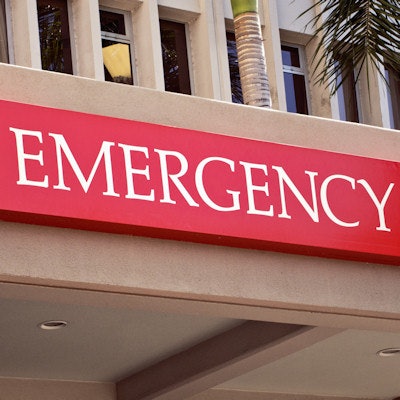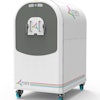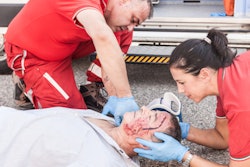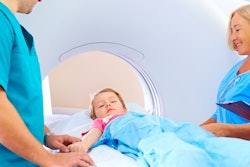
Does examining whole-body CT scans of children who present to the emergency department with blunt trauma improve their survival more than evaluating select CT scans of the patients' injured areas? Not in the least, found a study published online April 9 in JAMA Pediatrics.
Several groups have reported that acquiring whole-body CT scans -- or CT scans of the head, chest, and abdominal-pelvic regions -- of adults with blunt trauma could help identify hidden complications outside of the directly injured area and thus improve their likelihood of survival, according to first author Dr. James Meltzer and colleagues from Albert Einstein College of Medicine. In the case of children, however, undergoing multiple CT exams could be more harmful than helpful due to their higher sensitivity to radiation exposure.
In this retrospective study, the researchers set out to assess the effect of whole-body CT on the survival rate of children with blunt trauma. They examined data from the National Trauma Data Bank for pediatric patients who underwent CT scanning within two hours after arriving at the emergency department of one of 631 different hospitals (JAMA Pediatr, April 9, 2018).
Among the nearly 43,000 children, 20.4% underwent whole-body CT and 0.9% died within seven days of hospital admittance. Mortality was notably high for children who were hypotensive, stayed in the intensive care unit, or had a responsiveness score of less than 9 on the Glasgow Coma Scale.
Meltzer and colleagues developed a "propensity model" to account for the inherent differences between the children who underwent whole-body CT and those who underwent selective CT. The model adjusted for potential bias due to age, sex, race, type of injury, responsiveness, trauma center status, hospital region, and various other factors.
Using this weighted model, they found that children who underwent selective head, chest, or abdominal-pelvic CT had about the same mortality rate as those who underwent all three CT exams. There was no statistically significant difference between these two groups of patients.
| Selective vs. whole-body CT for children with blunt trauma | ||
| Selective CT | Whole-body CT | |
| Absolute risk of mortality | 1.3% | 1.1% |
| Total hospital length of stay | 22.4 hours | 41.3 hours |
On average, whole-body CT led to a longer total hospital length of stay but a slightly shorter emergency department length of stay than selective CT.
"The lack of improvement in mortality that we observed may suggest that any additional injuries that might have been detected by whole-body CT were either not life-threatening or did not offset the potential risk of an injured patient receiving a prolonged CT scan," they wrote.
Although whole-body CT could provide additional useful information about pediatric patients, it comes at the cost of increased radiation exposure, which is a growing concern for children, the authors noted.
"While we recognize that the importance of identifying all non-life-threatening injuries and incidental findings will continue to be a matter of debate, there is a shift in recent times for researchers to focus on identifying only injuries that are believed to be clinically important," they wrote. "Further prospective study is needed to determine whether a selective CT approach performs as well as whole-body CT in other areas, such as the identification of clinically important occult injuries."




















